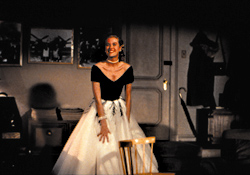Couture Fashion Throwdown
If you’d like to score some high-fashion items at bargain basement prices, get up early Saturday and head to Goodwill for its 23rd annual Glitter Sale. Goodwill collects donations year-round and reserves the choicest vintage and formal wear, jewelry, and accessories for this event. This year, you might be able to get your hands on a long, yellow goddess dress done by MGM costume designer Helen Rose, famous for creating Grace Kelly‘s wedding gown and dressing her in Hitchcock’s Rear Window. Last year, more than 300 shoppers lined up, arriving as early as 4:30 a.m., on the hunt for pieces by Chanel, Pucci, Escada, Cholé,and Versace. A back room will showcase this rare selection of fashion finds, including one woman’s collection of Escada couture, featuring a very ’80s Pepto-Bismol-pink beaded jumpsuit. A beaded black flapper dress dating from the ’20s will sell for $249, while most evening wear will be priced from $3 to $200; vintage fashion ranges in price from $10 to $200. Proceeds benefit Goodwill’s job-training and education programs. Come early and know what you’re looking for, because this bargain hunt promises to be a free-for-all. And you’ll need to find yourself a unitard (or wear a bathing suit) because there are no dressing rooms. Seattle Goodwill, 1400 S. Lane St., 206-328-1000, www.seattlegoodwill.org. 9 a.m.–5 p.m. Sat., Nov. 4; 11 a.m.–4 p.m. Sun., Nov. 5. ADRIANA GRANT
‘Fake’ Sculptures by Rodin
Dead men don’t cast bronze. So says Florida gallery owner, author, and Rodin crusader Gary Arseneau, who has accused Bellingham’s Whatcom Museum of History and Art—and numerous other museums—of “committing fraud” for exhibiting Rodin sculptures that he claims are “fakes.” Since many of the French sculptor’s works were cast after he died in 1917, they are not “original” and not legit, says Arseneau, who has been dogging Rodin shows nationwide for a number of years on what he considers a moral quest. Well, the meaning of “original” gets a little fuzzy when it comes to cast-bronze sculpture. Arguably, the only true “original” is the actual clay model sculpted by the artist, from which all plasters and casts were subsequently made. But Whatcom museum officials insist that all the pieces in “Rodin in His Own Words,” a traveling exhibit from the respected Iris and B. Gerald Cantor Collection at Stanford University, are indeed “original Rodins,” cast in accordance with the artist’s wishes (which allow posthumous productions of his work) and a 1956 French law that limits each piece to 12 castings (though hundreds had already been cast before then). Museum officials also say they clearly state the cast dates of all the sculptures in the exhibit, which continues through Dec. 10. The question of original vs. “replica” bronze casts has been an ongoing issue for a number of years. Enough so to prompt Stanford art professor (and Rodin specialist) Albert Elsen to draw up guidelines in 1974 on how to determine under what circumstances a reproduction can be considered authentic. His view: “While the term ‘original’ may be important to the public and to some professionals, to many artists and those knowledgeable about casting it is either of little value or only relative importance.” SUE PETERS




